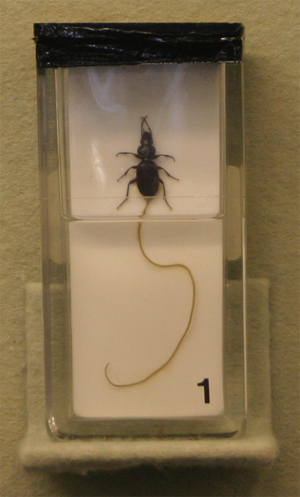
PHYLUM NEMATOMORPHA | |
Horsehair worms (230 species) are closely related to the nematodes. The adults live without feeding in freshwater and damp soil, but the larvae are parasitic in arthropods. The nematomorph body wall is composed of a thick outer cuticle, like that of nematodes. Nematomorphs also have a cellular epidermis with longitudinal cords and a muscle layer of longitudinal fibres. The pseudocoel is usually reduced. Adult females lay eggs, which develop into gordiod larvae with a protrusible proboscis armed with spines. After hatching, the larvae enter arthropods living near water and develop in their hosts’ haemocoels, absorbing nutrients through their body wall. The almost completely formed adults emerge from the host when it is near water and soon become sexually mature. The adults are so hair-like that they were formerly thought to have arisen spontaneously from the hairs of horses’ tails.
|  |






